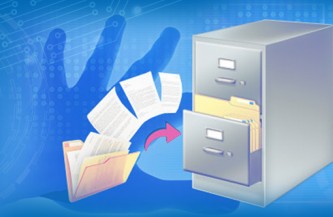GST for Entrepreneurs

Dear friends, welcome back to the blog series on GST. We have discussed various aspects of GST in the previous blogs, and today we will see the impact GST will have on the entrepreneurship sector. As you must have read, the Government of India has taken various steps for promoting entrepreneurship in India. In this blog, we will see how GST will prove to be a boon for entrepreneurs.
GST is a transparent system of tax administration. Most of the compliances including taxpayer registration, return submission, tax payment and refund claims will be online through GSTN portal only. This will help entrepreneurs to focus on their business rather than being worried about tax compliances.
Small Scale Entrepreneurs
Small businesses with a turnover of less than Rs. 20 lakhs (Rs. 10 lakhs in N-E states, Uttarakhand & Himachal Pradesh) are outside GST net. They need not register or pay tax, unless they wish to avail benefit of input tax credit. This is a big shift from the existing system of indirect taxes where the businessmen had to register under VAT and Service Tax if their turnover crossed Rs.10 Lakhs (Rs. 5 Lakhs in special category States). Thus, effectively threshold for registration has been doubled.
Medium Scale Entrepreneurs
For medium scale businessmen whose turnover exceeds Rs. 20 Lakhs, registration would be compulsory. However, business dealing in only intra state supplies of goods like small traders, manufacturers and restaurants, with a turnover of up to Rs.75 lakhs (50 Lakhs for 9 special category States), have the option to pay tax under Composition levy scheme. Under Composition levy the taxpayer has to pay a low tax of only 1% on the state turnover (2% in case of manufacturers and 5% for Restaurants), with simple compliance requirements.
Other Entrepreneurs
All businesses whose turnover exceeds Rs.20 Lakhs will need to register under GST. However, registration will prove to be a boon rather than a bane under GST. Registration will enable businesses to partner with Government in tax collection. There will be no cascading of taxes, because of the systematic input tax credit along the full value chain. Thus effectively only the value addition will be taxed at every stage of the supply chain.
Compliance under GST are simple and easy to follow. Many small businesses lack resources to hire experts or deploy a dedicated resource to look after their compliance requirements. However, under the GST law, all compliances have been streamlined and made simple for the benefit of taxpayers. An entrepreneur can adhere to the compliances by himself under a “Self-Assessment’ model. Taxes are to be paid on self-assessment basis. Returns need to be filed online through the GSTN portal. GSTN provides off-line utilities free of cost, to enable the small and medium taxpayers to compile invoice data and generate files without being online, which can then be uploaded to the portal at convenience. As a matter of fact, the system enables auto-population of returns based on uploaded invoice details. There are Computer Based Training materials (CBTs) with embedded videos for each process to be performed on the GST portal. The system is designed in a way that everything can be done by the taxpayer himself, with a little familiarisation. GST works on a “Do it Yourself model”.
Uniform tax laws and regulations will apply across the country. With India transforming into a single common and unified market, the scope of business would enhance multi-fold. Artificial barriers in the form of entry taxes will also go.
Competitive pricing under GST
GST will be an enabler in helping businesses to ensure best prices for their products and services. The prices will no longer have tax embedded in costs and as a result entrepreneurs will be in a much better position to offer competitive prices and attract customers.
Improving Logistics
GST will improve the efficiency of logistics in India and will directly contribute to the profitability of e-commerce and other businesses involved in supply of goods through transportation. GST promises seamless movement of goods across state borders without elaborate and unnecessary paperwork. As of today, 22 States have abolished their border check posts and in the 8 States it is in the process of being abolished. With these measures in place, the turnaround time for road transport will reduce significantly. Quick and timely delivery of goods will reduce inventory and encourage ‘Just-in-Time’ manufacture and supply, which will significantly improve the financial health of the business enterprise and reduce the pressure on the working capital.
Improving Liquidity and working capital flows of businesses.
Entrepreneurs today face major liquidity challenges. Many a times working capital is blocked in taxes and refund claims. The ITC mechanism under GST is aimed at preventing just that. Moreover, the refund processes are completely online and streamlined under GST with set timelines and online credit of refund in the bank account of the claimant. Further, the tax has to be paid on monthly basis by the 20th of the succeeding month, i.e. the tax payment to the government account for the supplies made in the month of July 2017 has to be made by 20th of August 2017. These measures will significantly improve the cash flow of businesses and ensure that working capital does not get blocked with Tax Authorities.
Boost to Exporters
Entrepreneurs who are into exports stand to gain immensely under GST. IGST paid on goods which are exported will be automatically refunded when the goods are exported similar to the practice in respect of Drawback claims. Service Exporters also stand to gain as their supplies (both inward and outward) will be zero rated. Flexibility is given to the exporters to export without payment of tax and claim refund of Input Tax Credit (ITC); or export on payment of Integrated Tax and claim refund thereof. IGST paid at the time of export of goods will be refunded through automatic route without the exporter having to file any refund claim. The shipping bill itself will be deemed to be a refund claim and it will be system processed at the back-end for online credit to the account of the exporter. In respect of other exports, like exports without payment of duty or export of services, provisional refund of 90% of the eligible refund amount will be granted within 7 days from the date of acknowledgement of the claim.
Compliance Rating System
A compliance rating system will be in place, which will rate all business on a scale. Better the tax compliance record of the business, higher will be the rating. The rating will be a guide to the prospective customers, to assess risk of engagement with a particular vendor. Thus a businessman who is more tax compliant, will be able to leverage better rating to attract potential customers. GST compliance can actually result in improved volumes and margins in business. It will help entrepreneurs to source goods/services from better rated suppliers, thus promoting good trade.
Conclusion
To conclude, GST is set to benefit entrepreneurs of all kind, with a transformational shift in the indirect tax administration in India. GST will be an enabler and facilitator for entrepreneurs when it comes to doing business.
We hope you enjoyed reading this article. If you have any queries or suggestions about the blogs we have published, you can send them to us here. Watch this space for more information on GST.





